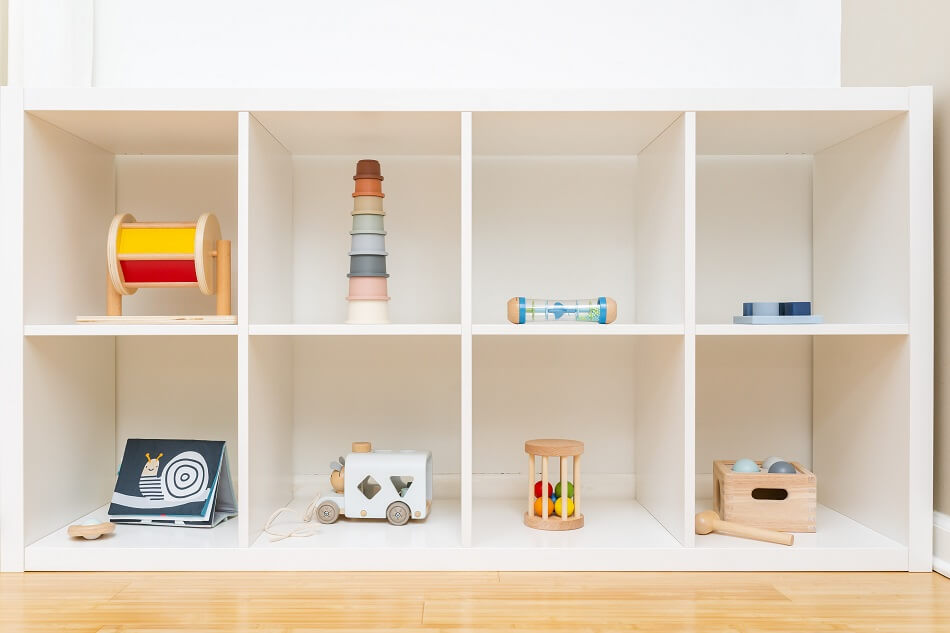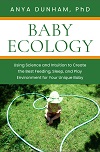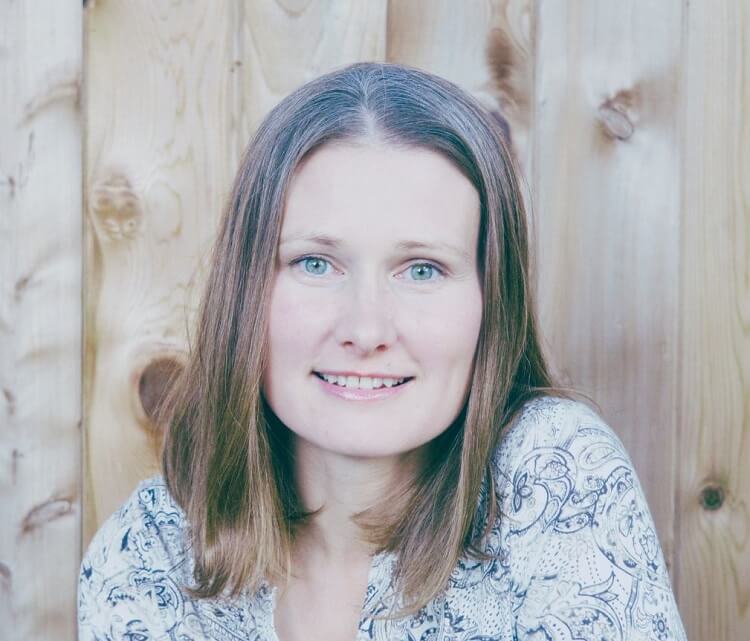Baby Ecology book is here! Learn more
Baby Ecology book is here!
- Home
- Learning to parent
- Baby parenting fads
8 baby parenting fads that don’t appear to be backed by science
by Anya Dunham, PhD
We are often led to believe we should follow these parenting fads when raising our babies, but is there evidence to back them up?

How parenting fads are born
As we get ready to welcome our babies and when we become parents, a powerful, universal caregiving drive sweeps us up and makes us want to do our best. But each family has to figure out what best actually looks like for their particular baby and their family.
It can be hard to distinguish marketing ploys from evidence-based information. To make matters worse, parenting influencers sometimes take scientific findings and over-extend or twist them to create a new trend or technique, delivered with a sense of urgency and pressure: “Do this… or else your baby will not thrive.”
And so, parenting fads are born. Here are my top 8, in no particular order.
Baby-parenting fads
Fad #1: Hard-stance baby-led weaning (BLW): “no purees at all”
The Baby-Led Weaning approach means letting babies feed themselves from the very start of weaning. (Note: BLW originated in the UK where ‘weaning’ means ‘adding complementary foods’, not ‘giving up breast-/formula-feeding’.) In other words, instead of being spoon-fed by adults, babies feed themselves hand-held food. Some BLW advocates vouch for a very strict approach. “Do not introduce purees or spoon-feed your baby ever at all!”; “Your baby won’t learn how to chew!”; “No more mush!”.
However, healthy, full-term babies develop motor skills and mealtime communication abilities at different times. For example, on average, babies begin eating finger foods with ease at 8.5 months, but the range of normal for this milestone to emerge is quite wide: between 6 and 12 months.1,2 The advice on when to introduce solid foods generally falls somewhere between 4 and 6 months (the World Health Organization recommends 6 months; read about 4 signs of readiness here). Many, but not all, 6-month-olds who are joining their family at the dinner table can do so in a “classic” BLW style.3 And if a baby who isn't ready for BLW is fed BLW-style, is feeding truly baby-led? It is absolutely possible to feed your baby purees or a combination of purees and finger foods in a responsive, baby-led way and set your baby up for healthy, happy eating. (And yes, your baby will learn how to chew!)
Fad #2: Baby toy subscription boxes
Baby toy subscription boxes and play kits are a relatively new trend. There is nothing inherently wrong with toy subscription boxes, but they are certainly not as necessary as the ads would like you to believe. They are convenient and usually aesthetically pleasing - and it can be exciting to receive something new in the mail. But our babies don’t need pricey toys. They learn by figuring out patterns and making mental maps: “When I see this happen, I can expect that.” They also look for surprise events that don’t fit into the patterns they learned previously.4 For example, by about 5 months babies learn that objects that are dropped usually fall down5 and may be surprised to see a balloon floating in the air. Your baby can learn about gravity and object properties (shapes, sizes, weights, texture) from specially curated toy subscription boxes – or, just as well, from simple, safe toys and household objects such as blocks, balls, spoons, and muffin cups.
Fad #3: Baby extracurriculars
Baby activities and enrichment classes such as “multi-sport class for babies as young as 4 months” and “infant aquatics” are readily available in many parts of the world, but none of these extracurriculars are necessary. The 5 ‘ingredients’ babies need most for learning – sound sleep, avoiding overstimulation, experiencing stable predictable environments, interacting with supportive adults, and exploring safely and freely on their own- can all be easily found in your home, backyard, or local park. Of course, extracurriculars could be fun if they work for both your baby and for you (don’t interfere with sleep and feeding, don’t require hours spent in a car). But if you are not able to do these activities or not comfortable doing them right now, for any reason, your baby will still find plenty of opportunities to learn, connect, and grow in your loving home.
Fad #4: Teething necklaces and bracelets
Teething necklaces and bracelets (for example, those made of amber or hazelwood) claim to ‘naturally’ relieve teething pain. These necklaces and bracelets are choking and strangulation hazards.6,7 The Canadian Paediatric Society and the American Academy of Pediatrics share similar safety concerns with the use of teething necklaces and discourage the use of such products. (Also, teething causing high fevers, serious diarrhea, and major sleep disruptions appears to be a myth anyway – learn more about this and other myths here.)
Fad #5: ‘Educational’ baby shows
When I first became a parent 11 years ago, it seemed clear that TV is not beneficial for children under 2 years old. But despite the still-clear screen time advice by the AAP and the WHO, recently some Youtube channels have become very popular. They are recommended in parenting circles as ‘educational’, ‘beneficial for language development’, and ‘not the same as screen time’. I won’t name them, but at least a couple appear to be modeled on the classic, much loved show for (older!) children by Mr. Rogers. Educational value of shows for babies is not supported by science; any such shows do count as screen time. It is still best to avoid all screen time except videochatting until your baby is at least 18 months old. (Read about the now-classic example of Baby Einstein and the science behind the no-screen-for-baby recommendations here – it’s quite eye-opening!)
Fad #6: 'Play' equipment
There are many types of baby play equipment: bouncy chairs, Bumbo-type moulded floor seats and other sit-me-ups, swings, exersaucer-type activity centers, and other seating devices. I’ve heard moms jokingly refer to these seats as “the circles of neglect”; they are also referred to as “baby containers”. These devices are certainly convenient for parents, and babies often seem like they are comfy and having fun. Manufacturers tend to claim that baby play equipment delivers developmental benefits, but to my knowledge, researchers have not found any benefits so far. In fact, one study showed a correlation between time spent in “containers” and slower motor development.8 It can be helpful to have a baby seat, but you certainly don't need to buy a variety of baby containers. You can read more about why the American Physical Therapy Association discourages prolonged time in ‘containers’ and about the benefits of natural movement for babies here. And here’s how you can create a play area that supports free movement and exploration.
Fad #7: Very expensive high chairs
Many high chairs are available on the market, and some of them come with a very steep price tag. These pricier feeding chairs are usually designed to last through toddlerhood, and some have a recline option for ‘lounging’ younger babies. There is nothing wrong with that as long as the high chair offers good support during feeding, allowing baby to sit fully upright for core stability and swallowing safety. Watch for seats that are much too wide for a little baby who’s just starting on solids, especially if your baby is on the smaller side. If your high chair comes with a recline option for ‘lounging’, don’t feed baby solids in a reclined position, and never feed your baby in a car seat. (If you are looking for a comfortable, inexpensive, and practical high chair option, see this solution we came up with for our tiny eater.)
Fad #8: Relying on the Wonder Weeks app/ book for exact timing of 'leaps'
The Wonder Weeks book, and now the app, is something many new parents turn to in hopes of finding explanations for their baby’s fussiness or new skills. As I describe in Baby Ecology, our babies do work on many developmental milestones and skills, which do often appear as ‘leaps’; their general sequence is indeed somewhat predictable. However, the exact timing varies from baby to baby, and so trusting the app to be the ‘end all be all’ is not unlike trusting horoscopes. (I am working on an in-depth article about The Wonder Weeks concept – coming soon.)
I hope you found these interesting. Do you disagree or have another fad to add? Send me a message!
References
References
1. Carruth BR, Skinner JD (2002) Feeding behaviors and other motor development in healthy children (2—24 Months). Journal of the American College of Nutrition 21(2): 88-96
2. Skinner JD et al (1998) Mealtime communication patterns of infants from 2 to 24 months of age. Journal of Nutrition Education 30(1): 8-16
3. Cameron SL, Taylor RW, Heath A-LM (2013) Parent-led or baby-led? Associations between complementary feeding practices and health-related behaviours in a survey of New Zealand families. BMJ Open 3(12): e003946
4 Needham A, Baillargeon R (1993) Intuitions about support in 4.5-month-old infants. Cognition 47(2): 121-148
5. Rauchs G et al (2008) Sleep modulates the neural substrates of both spatial and contextual memory consolidation. PLoS One 3(8): e2949
6. Abdulsatar F, Matsui D, Miller M, Taheri S (2019) Teething necklaces and bracelets pose significant danger to infants and toddlers. Paediatrics & Child Health 24(2): 132–133
7. Cox C, Petrie N, Hurley K (2017) Infant strangulation from an amber teething necklace. CJEM 19(5): 400-403
8. Abbott A, Bartlett D (2001) Infant motor development and equipment use in the home. Child: Care, Health and Development 27(3): 295-306
Using hundreds of scientific studies, Baby Ecology connects the dots to help you create the best environment for sleep, feeding, care, and play for your baby.
Warmly,
Anya


